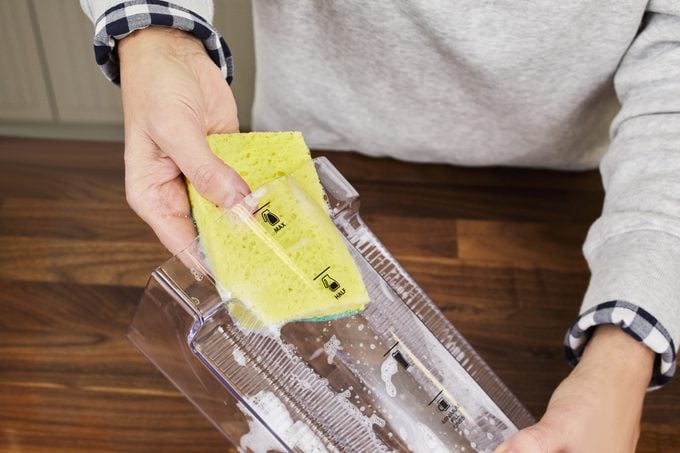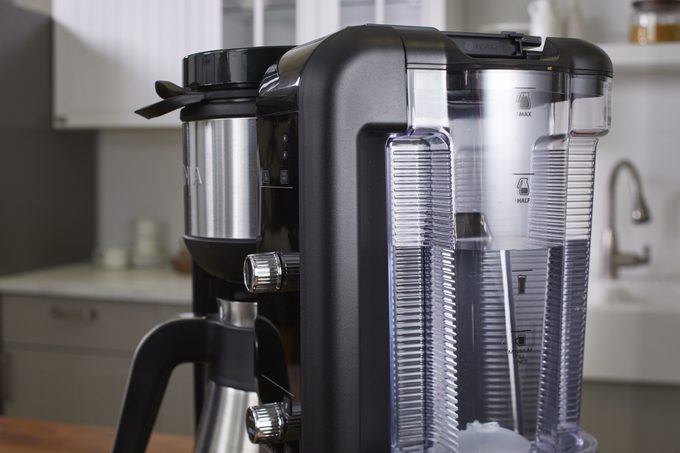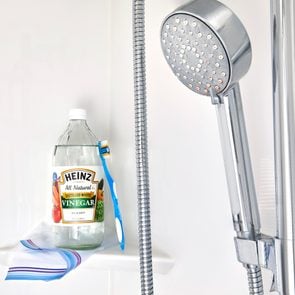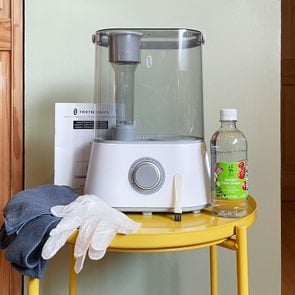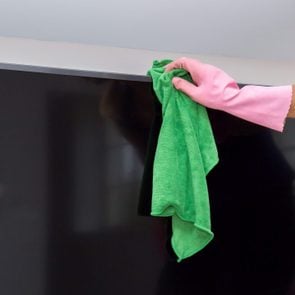Here’s Exactly How to Clean a Coffee Maker
Updated: Mar. 20, 2023
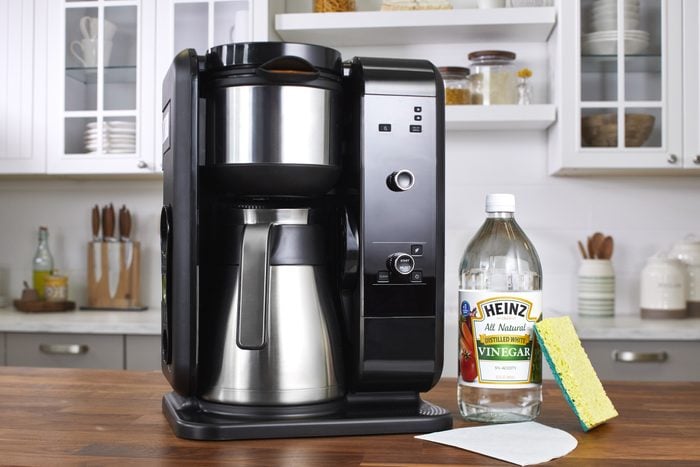
For a better brew, get rid of the gunk with natural ingredients like vinegar, lemon, and baking soda.
If you haven’t cleaned your coffee pot lately—or don’t even know how to clean a coffee maker—now is the time to learn the steps. Not only does buildup make your coffee taste kind of gross, but it isn’t great for your machine either.
Before you take a quick swipe at the coffee pot and call it a day, know that cleaning your coffee maker the wrong way can actually make your coffee taste worse, regardless of whether you use the best cold brew coffeemakers or try different types of coffee. “Bad cleaning habits can certainly have a negative impact on the taste of your coffee,” says Giorgio Milos, master barista and coffee expert for Illy, the premium Italian roaster. “The same level of care you put into making your perfect cup of coffee each morning should be used in taking care of your coffee devices and accessories, as machine upkeep plays a major role in its production quality.”
We asked Milos to spill his step-by-step instructions on how to clean a coffee maker. (Keep in mind, these tips differ from those you’d follow when cleaning a Keurig.) Get ready to learn another facet of the art of brewing great coffee, then add your coffee maker to your cleaning schedule.
Why you need to clean your coffee pot
Coffee is somewhere between 12 and 16 percent oil, and that’s a good thing. These precious oils carry most of the aromatic compounds. “Essentially, no oils, no flavor,” Milos says.
So what happens when these oils stay in your coffee maker for too long? “Despite their importance, these oils can also become rancid if left exposed to oxygen for too long and ruin the taste of your next cup of coffee,” Milos said. “That’s the reason why you must clean your coffee devices after every single use.”
If you’re too busy (or lazy!) for daily cleaning, Milos suggests prioritizing the parts of the machine that come in direct contact with the coffee. While some devices, like espresso machines, need to be cleaned completely every day, Milos says others—including stove top coffee pots, Moka pots, and drip coffee makers—can be rinsed with hot water after use and only require deep cleaning on a weekly basis. That should leave you with plenty of leftover time for cleaning the rest of your kitchen.
How to clean a coffee pot
Cleaning your coffee maker daily may sound like a lot of work, but it’s easier to clean your coffee pot daily than descale it yearly. “A daily cleaning can be a fairly simple and quick routine,” Milos says.
So how exactly do you clean a drip coffee pot? Follow Milos’s advice by taking the following steps.
- Remove the grounds.
- Clean the brew basket, lid, and carafe using your normal dish soap to remove daily residual oils.
- Wipe the warming plate of coffee spills.
Ta-da! You’re done—really. The process is so simple, you’ll have plenty of time to clean everything else in the kitchen, including your refrigerator and stainless steel appliances.
How to clean a coffee maker that has limescale
Aside from oils, limescale buildup in the machine is the primary cleaning concern. It’s caused by the water used in your coffee pot, Milos explains. As disgusting as it looks, it’s actually less of a nuisance than the oil buildup. “Limescale buildup grows much more slowly, so you may only need to descale [your coffee maker] once or twice a year as opposed to daily or weekly,” he says.
That said, if you drink a lot of coffee, you may have to descale your coffee maker more often. “The frequency will depend on your consumption levels, meaning that the more coffee you make, the more limescale buildup you will have,” says Milos. “You will know when there’s limescale buildup [because] the brewing process [will be] longer and your machine [will] not work as efficiently.”
The best way to descale a coffee maker may depend on the type of coffee pot you use. Some machines (like the Y3.3 iperEspresso) are built with automatic descaling functions. If that’s the case for yours, follow the manual’s instructions. Don’t have an auto-descaling function? No worries. You can descale a coffee maker with descaling products, lemon, vinegar, or baking soda.
How to clean a coffee maker with vinegar
Don’t just assume that cleaning your coffee maker with vinegar will be safe for the machine. “You can use a vinegar solution that shouldn’t damage the machine, but check the user manual,” Milos says. Scan it for any cautions and follow any cleaning recommendations.
If your machine doesn’t advise against it, try Milos’s easy formula for cleaning a drip coffee maker with vinegar:
- Mix one part white vinegar and nine parts water.
- Fill the water reservoir and run your coffee maker through half of a drip cycle.
- Pause halfway through the cycle and allow the solution to sit for 30 minutes so the vinegar can permeate the buildup and break it down.
- Finish the brewing cycle and run two more full cycles with clean water to make sure your machine is completely clean of any vinegar.
How to clean a coffee maker with natural or store-bought cleaning solutions
If you don’t have vinegar on hand but still need to know how to clean a drip coffee maker, try one of Milos’s other solutions:
- Use lemon water. Aim for a solution that’s about 20 percent lemon and 80 percent water—it works well for limescale too. Run it through the coffee pot like you would the vinegar solution, but be sure to run the coffee maker cycle with plain water afterward.
- Reach for baking soda, the household jack-of-all-trades. Milos suggests blending a quarter cup of baking soda with a liter of water to remove oils and stains.
- Try a commercial cleaning product. Milos recommends Urnex products, which he says come in liquid, tablet, and powder options.
Tips for keeping your coffee maker clean
When brewing coffee, using good water is fundamental, not only for taste, but for a cleaner coffee maker. After all, water hardness plays a big role in the quality of your java and in the longevity of your machine.
“Water is up to 99 percent of your coffee, so clean water that is free of chlorine is fundamental for the taste,” he says. “Hard water [more than 250 mg/L of carbonates] makes good coffee, but builds up more limescale. Too-soft water [less than 100 mg/L] doesn’t extract the full range of aromatics. The best number is about 150 mg/L.”
To hit the sweet spot, use filtered or spring water. Both options will help you avoid hard water; just be sure the one you pick isn’t too soft.
The type of coffee beans you use can also affect how clean your machine stays. It has to do with the amount of residual oil. “Dark-roasted coffee beans tend to be a bit more oily because they’re roasted for a longer period of time,” Milos said. “Medium-roasted coffee beans are a quality option that are not too oily and always brew a smooth and balanced cup of coffee.”
Once you’ve mastered how to clean a coffee maker, move on to other kitchen essentials, like cleaning your microwave.
Source:
- Giorgio Milos, master barista and coffee expert for Illy

